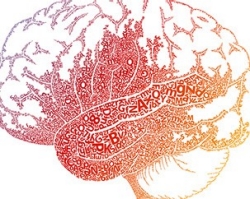The eye: a window to the brain
To date, Alzheimer's disease remains incurable and can only be diagnosed with conventional means once symptoms begin to manifest . The difficulty in developing new drugs for this disease is largely due to the difficult and late diagnosis of the disease.
Jean-Paul Soucy, from the Montreal Neurological Institute and Hospital at McGill University and a PERFORM research member, suggests that Alzheimer's disease is detectable by a simple non-invasive analysis of the eye. In collaboration with partners from industry (Optina Diagnostics), he is developing a new retinal imaging platform using fluorescence combined with advanced imaging instruments to detect Aß plaques (abnormal proteins aggregates seen in those suffering from Alzheimer’s) in the retina of patients..
In about one second, this portable device will scan the retina of patients with Alzheimer’s as well as those with mild cognitive impairments, a condition that may be the precursor of full blown Alzheimer’s. This will allow his team to compare results with those of other more complex imaging techniques looking at Aß plaques in the brain, and identify potential indicators of dementia before it evolves.
For Soucy the breakthrough is the ability to do large-scale testing in a less expansive and non-invasive way before Alzheimer’s develops.
“If we are going to prevent Alzheimer’s we have to do it before symptoms develop,” he says. “Right now we are treating people who are in advanced stages of the disease and that’s like trying to control cholesterol with someone who has had four heart attacks.”
The end goal is to detect Alzheimer’s 10 to 15 years before it is clinically active so that high-risk patients can start using medication.
Get more information on research taking place at PERFORM.



